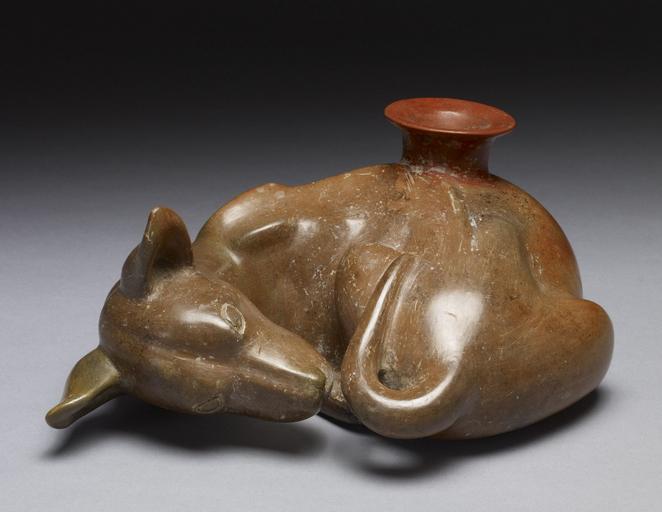MAKE A MEME
View Large Image

| View Original: | Colima_-_Dog_Effigy_Vessel_-_Walters_20092063_-_View_A.jpg (1800x1393) | |||
| Download: | Original | Medium | Small | Thumb |
| Courtesy of: | commons.wikimedia.org | More Like This | ||
| Keywords: Colima - Dog Effigy Vessel - Walters 20092063 - View A.jpg Among the Mexica Aztecs of highland Mexico dogs were associated with the deity Xolotl the god of death This deity and a dog were believed to lead the soul on its journey to the underworld The Mexica also associated Xolotl with the planet Venus as the evening star portrayed with the head of a canine and the twin brother of the deity Quetzalcˇatl who personified Venus as the morning star The dog's special relationship with humans is highlighted by a number of Colima dog effigies wearing humanoid masks This curious effigy type has been interpreted as a shamanic transformation image or as a reference to the modern Huichol myth of the origin of the first wife who was transformed from a dog into a human However recent scholarship suggests a new explanation of these sculptures as the depiction of the animal's tonalli its inner essence which is made manifest by being given human form via the mask The use of the human face to make reference to an object's or animal's inner spirit is found in the artworks of many ancient cultures of the Americas from the Inuit of Alaska and northern Canada to peoples in Argentina and Chile The reclining dog has seemingly just woken slightly raising its head and perking up its ears in reaction to whatever disturbed its slumber The artist skillfully modeled its body especially the muscles and skeletal features 100 BC-AD 300 earthenware burnished slip paint in red and light brown H 5 5/8 x L 12 3/16 x W 10 15/16 in 14 3 x 30 9 x 27 8 cm accession number 2009 20 63 80218 David Stuart Gallelries date and mode of acquisition unknown John G Bourne 1980s by purchase Walters Art Museum Gift of John Bourne 2009 place of origin Colima Mexico Walters Art Museum license Objects from Colima in the Walters Art Museum Media contributed by the Walters Art Museum needs category review Dogs in Pre-Columbian art | ||||